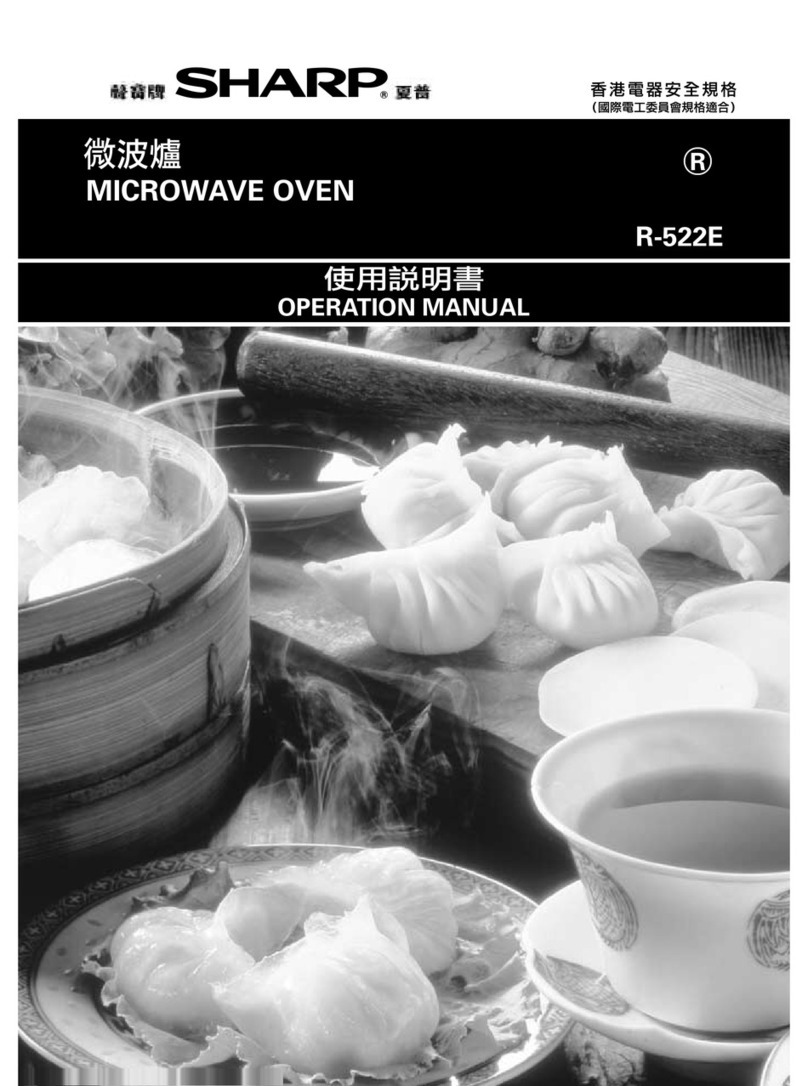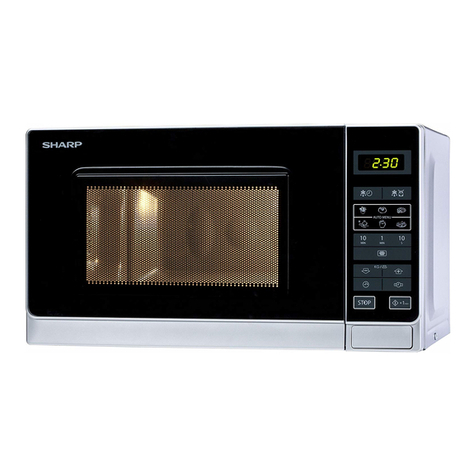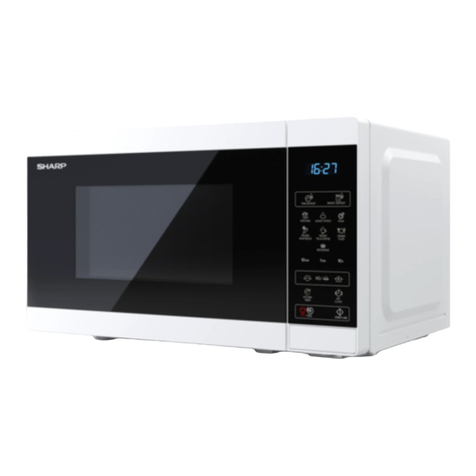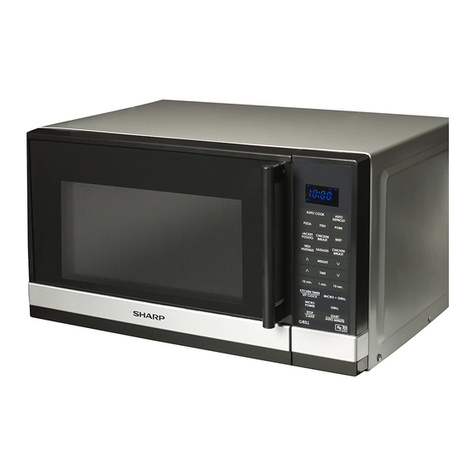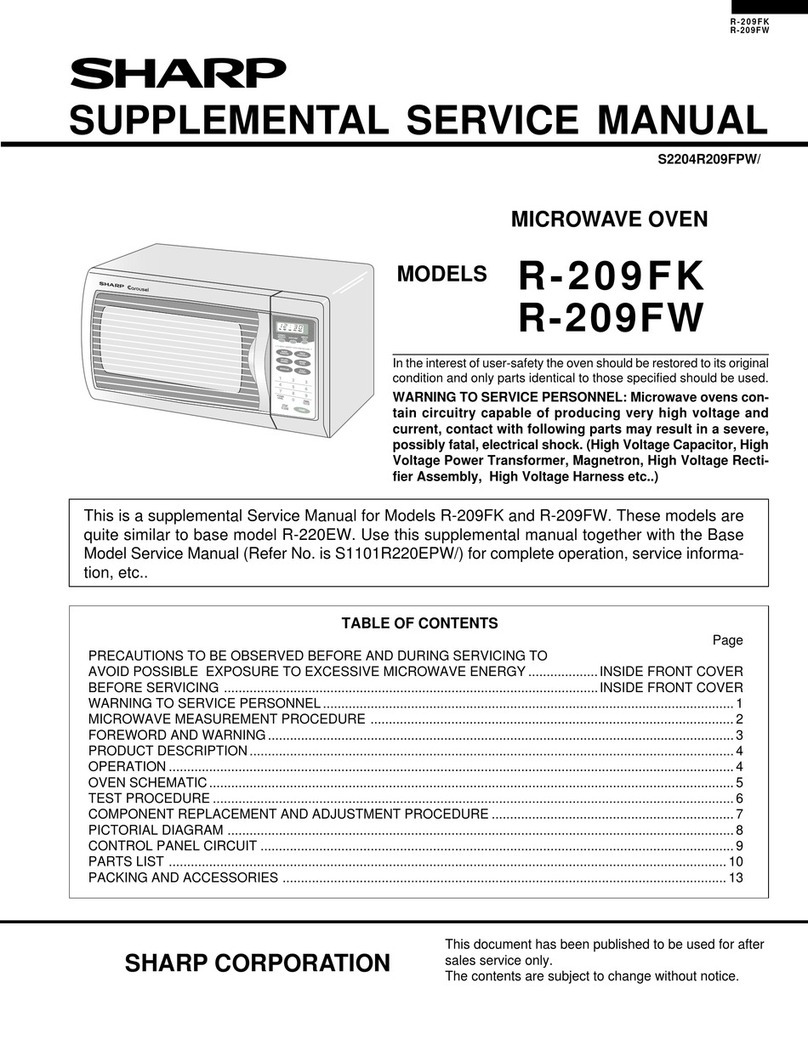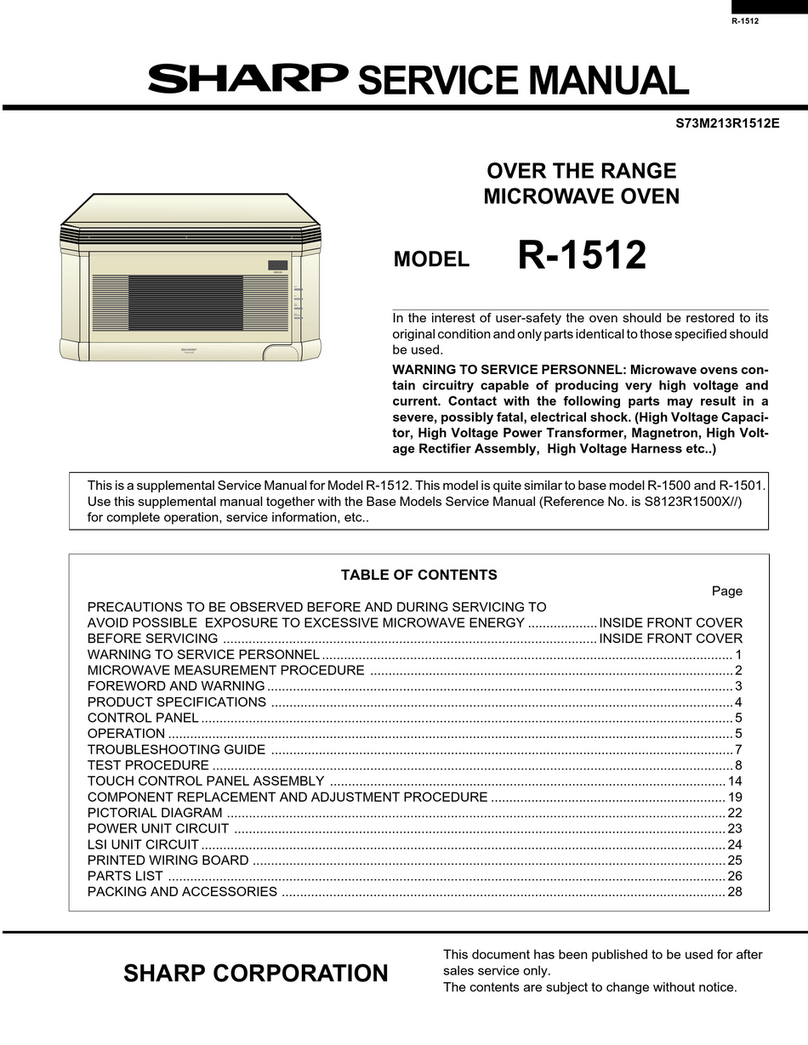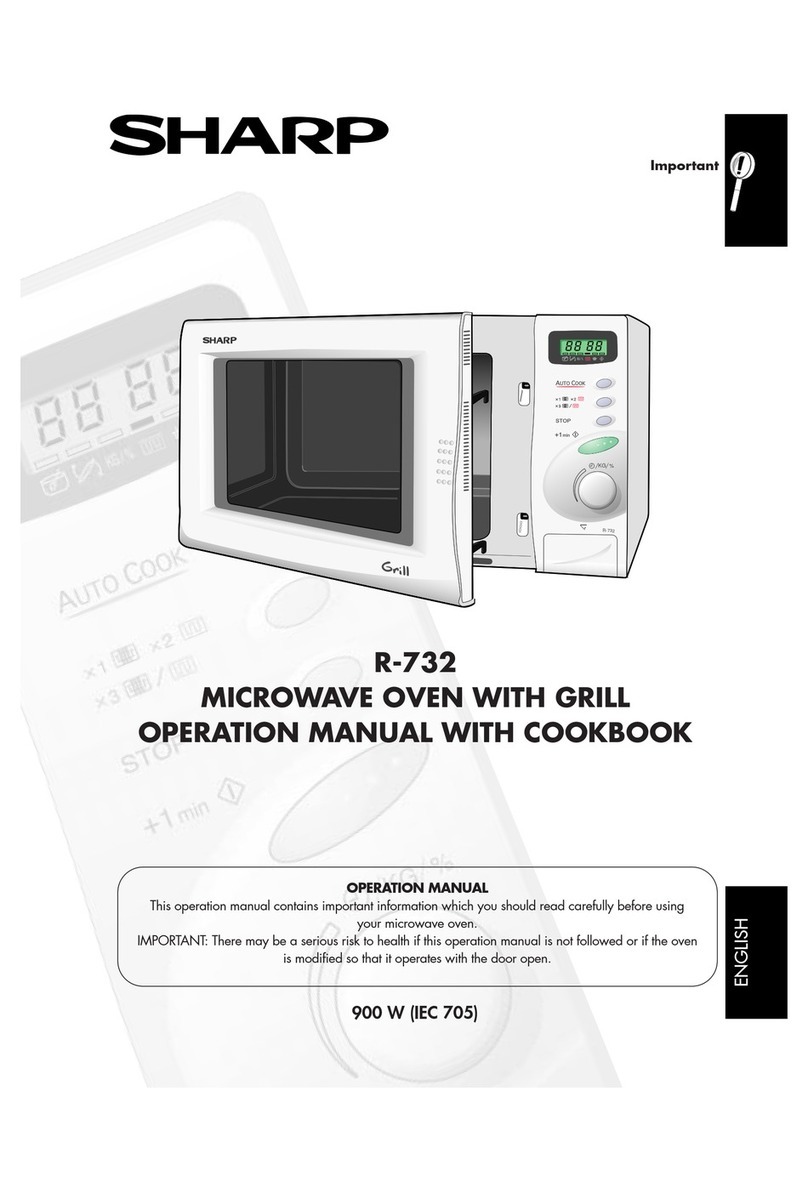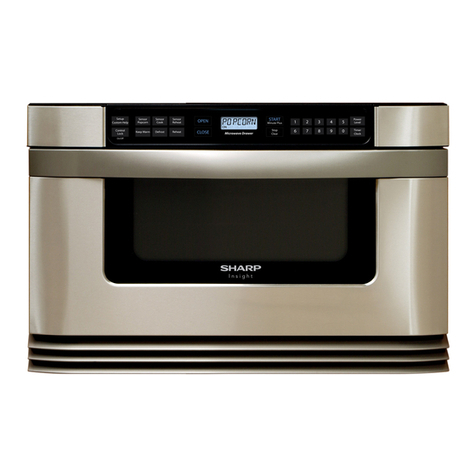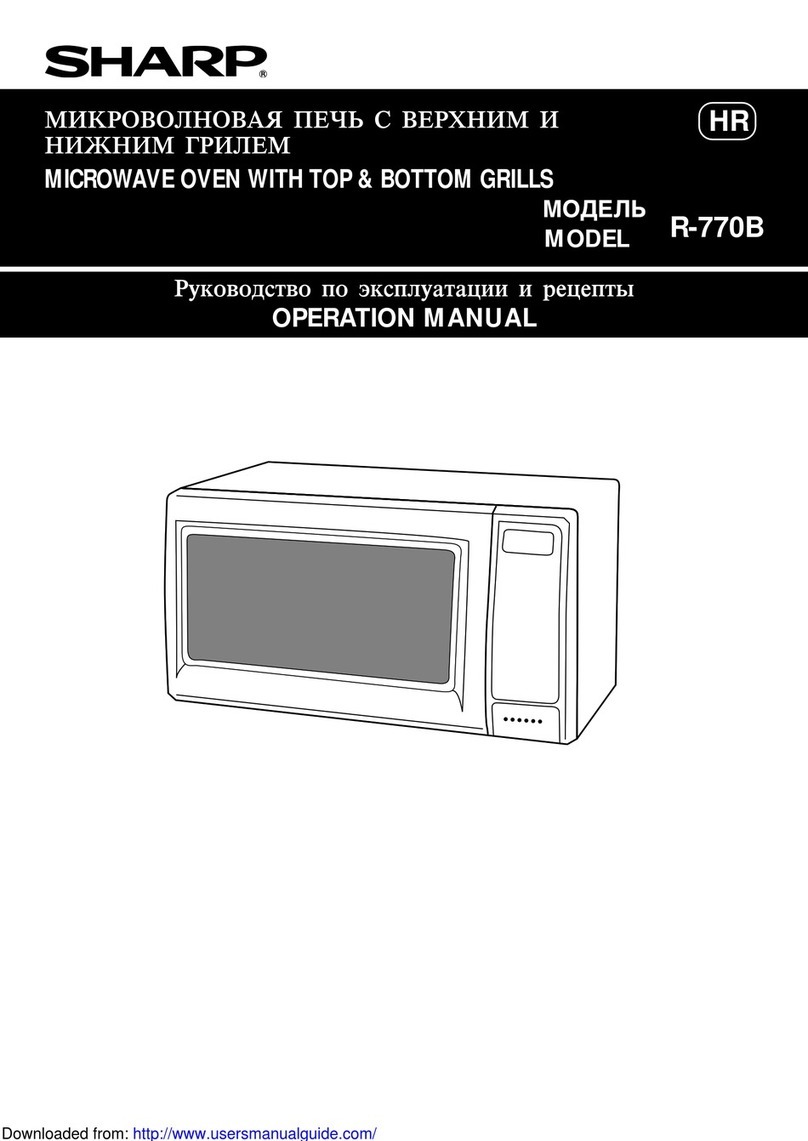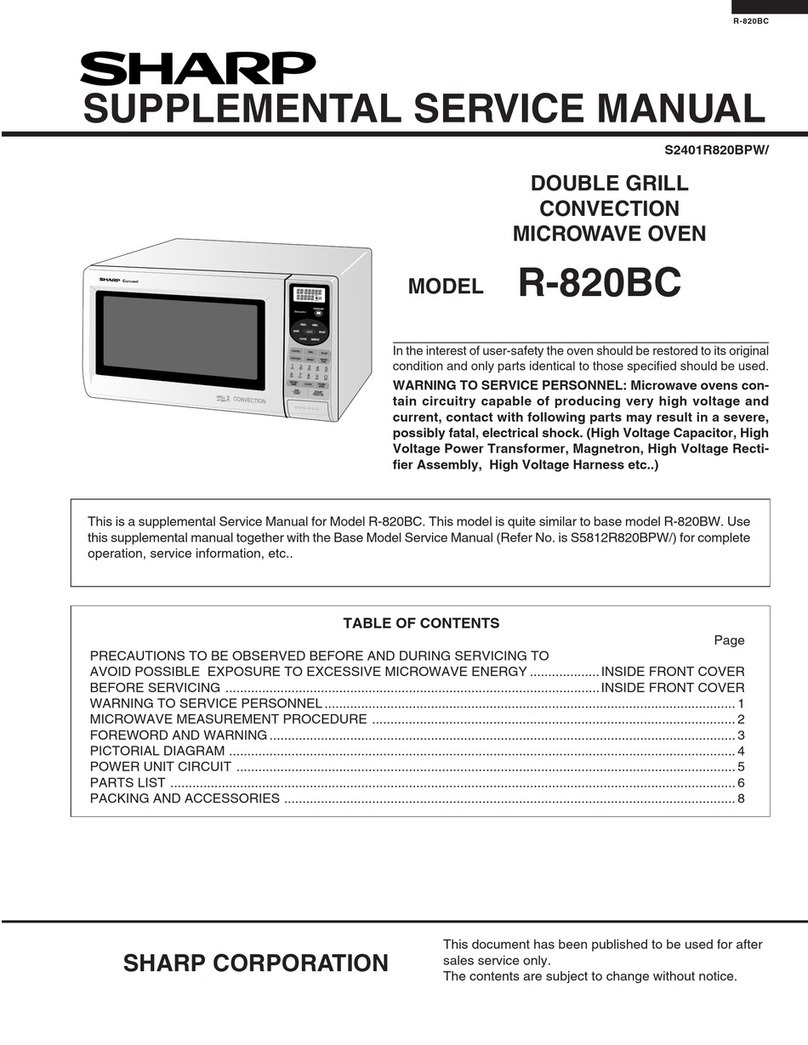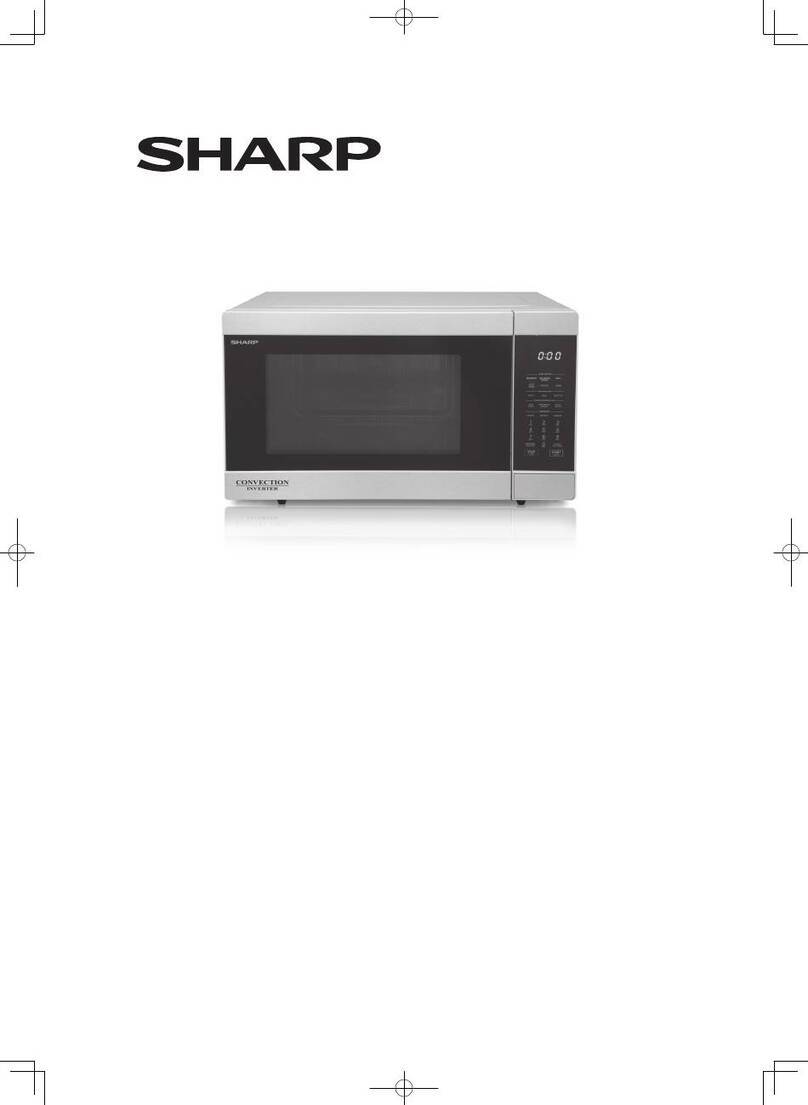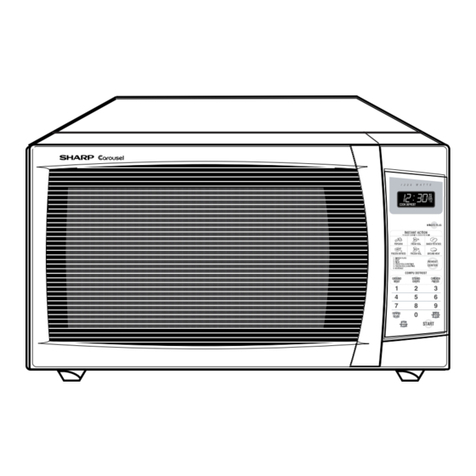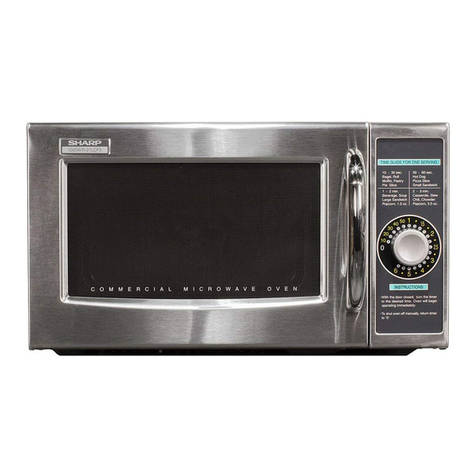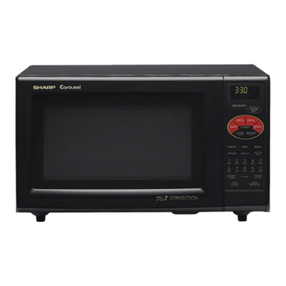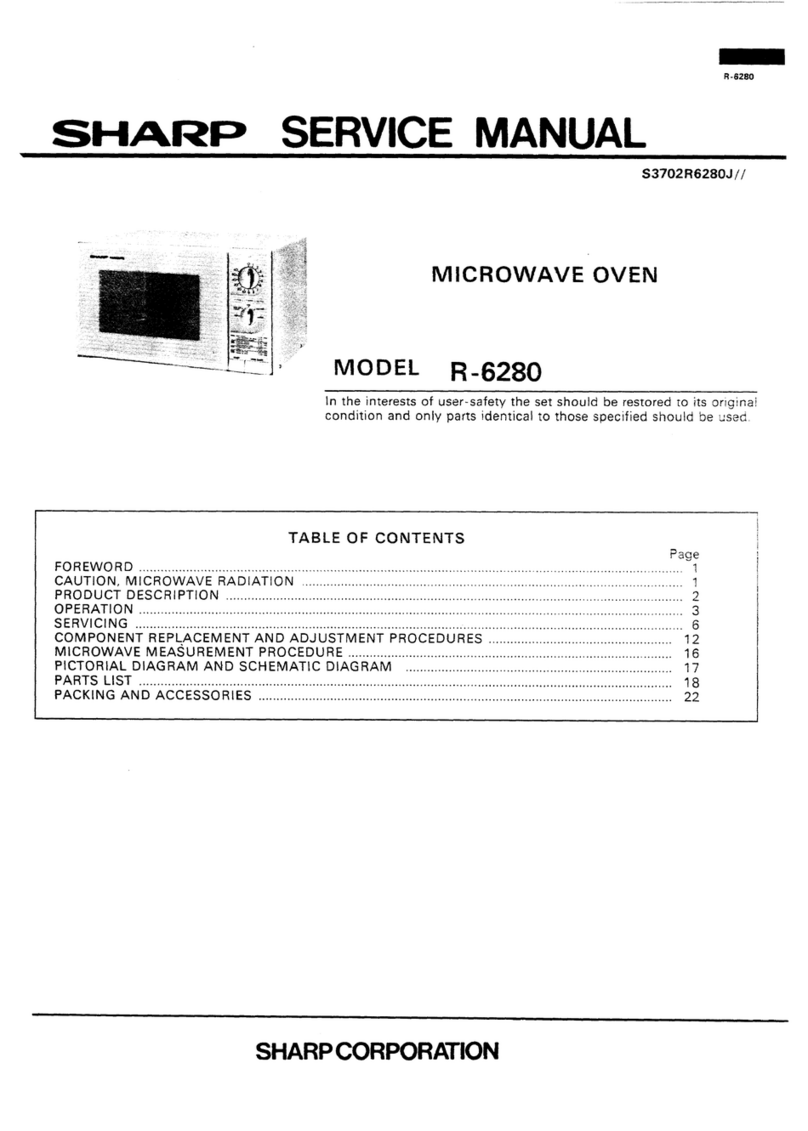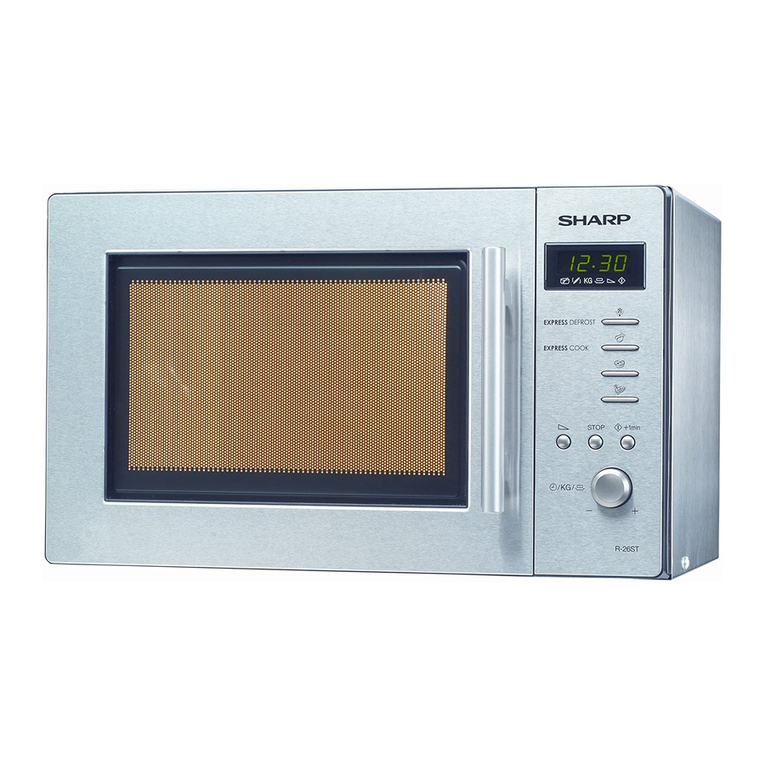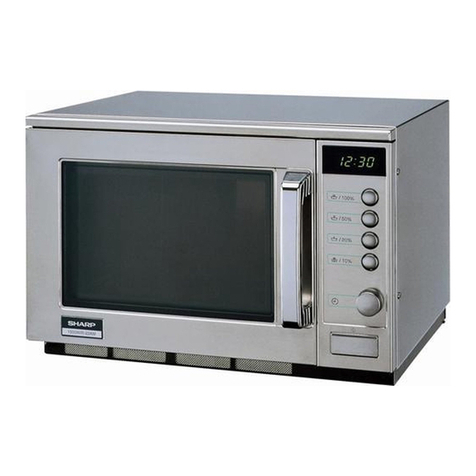8
R-220DW
R-230DK
R-230DW
DESCRIPTION AND FUNCTION OF COMPONENTS
DOOR OPEN MECHANISM
The door is opened by pulling the door, refer to the Figure
D-1.
Figure D-1. Door Open Mechanism
DOOR SENSING AND SECONDARY INTERLOCK
SWITCHES
The secondary interlock switch is mounted in the lower
positionofthelatchhookand thedoorsensingswitchinthe
primaryinterlocksystemismountedintheupperpositionof
thelatchhook.Theyareactivated bythelatchheadsonthe
door. When the door is opened, the switches interrupt the
power to all high voltage components. A cook cycle cannot
take place until the door is firmly closed thereby activating
both interlock switches. The primary interlock system con-
sists of the door sensing switch and primary interlock relay
located on the control circuit board.
MONITOR SWITCH
Themonitorswitchisactivated(thecontactsopened)bythe
latch head on the door while the door is closed. The switch
is intended to render the oven inoperative, by means of
blowing the C/T fuse, when the contacts of the primary
interlock relay (RY2) and secondary interlock switch fail to
open when the door is opened.
Functions:
1. When the door is opened, the monitor switch contacts
close (to the ON condition) due to their being normally
closed.Atthistimetheprimaryinterlockrelay(RY2)and
secondary interlock switch are in the OFF condition
(contacts open) due to its being normally open contact
switches.
2. Asthedoorgoestoaclosedposition,themonitorswitch
contacts are first opened and then the door sensing
switch and secondary interlock switch contacts close.
3. If the door is opened, and the primary interlock relay
(RY2) and the secondary interlock switch contact fail to
open, the C/T fuse blows simultaneously with closing of
the monitor switch contacts.
CAUTION: BEFORE REPLACING A BLOWN C/T FUSE,
TEST THE DOOR SENSING SWITCH, PRI-
MARY INTERLOCK RELAY (RY2), SECOND-
ARY INTERLOCK SWITCH AND MONITOR
SWITCH FOR PROPER OPERATION. (RE-
FER TO CHAPTER "TEST PROCEDURE").
NOTE: C/T FUSE AND MONITOR SWITCH ARE
REPLACED AS AN ASSEMBLY
TURNTABLE MOTOR
The turntable motor rotates the turntable located on the
bottom of the oven cavity, so that the food on the turntable
iscooked evenly.The turntablemay turnin eitherdirection.
COOLING FAN MOTOR
The cooling fan motor drives a blade which draws external
cool air. This cool air is directed through the air vanes
surrounding the magnetron and cools the magnetron. This
air is channelled through the oven cavity to remove steam
and vapors given off from the heating foods. It is then
exhausted through the exhausting air vents at the oven
cavity.
MAGNETRON THERMAL CUT-OUT
The thermal cut-out located on the top of the oven cavity is
designed to prevent damage to the magnetron if an over
heated condition develops in the tube due to cooling fan
failure, obstructed air guide, dirty or blocked air intake, etc.
Undernormaloperation,thethermalcut-outremainsclosed.
However,whenabnormallyhigh temperaturesarereached
withinthemagnetron,thethermalcut-outwillopenat 257˚F
(125˚C), causing the oven to shut down.
C/T FUSE
1. TheC/T fuseblowswhenthe contacts(COM-NO)ofthe
primary interlock relay (RY2) and secondary interlock
switchremainclosedwith theovendooropen andwhen
the monitor switch closes.
2. If the wire harness or electrical components are short-
circuited,thisC/Tfuseblows topreventanelectricshock
or fire hazard.
3. The C/T fuse, located on the top of the oven cavity, is
designed to prevent damage to the oven by fire. If the
food load is overcooked, by either error in cook time or
defect in the timer, the C/T fuse will open.
Under normal operation, the C/T fuse remains closed.
However,whenabnormallyhigh temperaturesarereached
within the oven cavity, the C/T fuse will open at 248˚F
(120˚C),causingtheoventoshutdownorwhenthe electric
currents beyond 15A flow, the C/T fuse will open.
Latch Heads
Latch Hook
Door
Door
Sensing
Switch
Monitor
Switch
Secondary
Interlock
Switch

